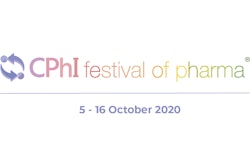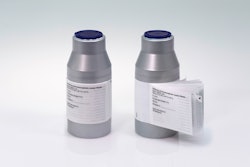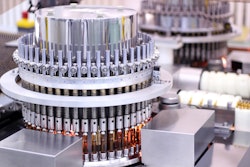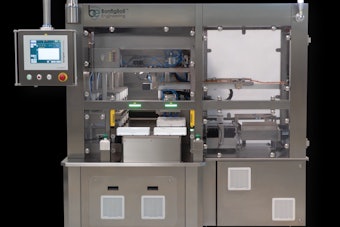
CPhI Annual Report–launched ahead of the first CPhI Festival of Pharma (5-16 October, 2020), the world’s largest digital pharma Expo–predicts dramatic growth of new mAb production in China, capacity shortages for cell and gene therapies in the USA, and the widespread global adoption of single-use technologies, but only limited continuous bioprocessing.
Three CPhI experts from BioPlan Associates–Vicky Qing XIA, Leo Cai Yang and Eric Langer–explore the rapidly changing global biologics markets, with special reference to the implications for contract outsourcing and China’s continued emergence as a hub for both bio innovation and contract services.
Remarkably, China is predicted to continue its rapid bio growth rates, with more than 10 new mAbs predicted to be launched per year in the country by 2025. In fact, the total market size will quadruple by 2025, reaching 120bn RMB, and rising further to 190bn RMB by 2030.
See it Live at PACK EXPO Connects Nov. 9-13: Deep-draw, servo-driven thermoformer for syringe, vial and ampoule packaging, by MG America, Inc. Preview the Showroom Here.
“As most early-stage biotech in China lack manufacturing facilities, the need for contract manufacturing services is rising quickly, and has been accelerated further by the 2016 MAH reforms,” commented Vicky XIA, senior project manager at BioPlan Associates.
According to the CPhI report, bioprocessing outsourcing in China is currently highly stratified with four tiers and just one domestic company in tier one–WuXi Biologics–and a number of international CDMOs including BI, Lonza, and Merck. However, by 2025 it is anticipated that as many as five more domestic CDMOs may have reached tier one status, with FDA and EU facility approvals. Significantly, pending regulatory changes for contract vaccine production will likely spur further rapid growth amongst the existing tier one CDMOs.
“WuXi Biologics in 2019 realized 35.3% of its total revenue of USD 0.57 billion from China, which is ~USD 0.2 billion and would translate to ~35% of the total biopharma outsourcing service market in China1. However, despite sizable growth in revenue, its overall share of the market will now fall, as the mAb market expands rapidly,” says XIA.
In terms of global manufacturing, Single Use Systems (SUS) are now the leader at both pre-clinical and clinical stages, with nearly 85% now involving a substantial SUS component. Yet whilst its usage continues to grow, continuous bioprocessing is not anticipated to be in mainstream usage by 2025.
Eric Langer, president and managing partner of BioPlan Associates says: “Because preclinical and clinical pipeline products require flexible manufacturing, SUS lends itself to these scales, but many of these will fail as they progress through the pipeline. This means that while more commercial-scale biologics are going to be made in SUS platforms, or hybrid systems, over the next 2+ years, stainless platforms are, and will remain, critical to bioprocessing as well.
The report also suggested that in the United States and Europe there is likely to be a cell and gene therapy capacity crunch by 2025, with CDMOs investing in this area already expanding to try and meet the pipeline’s demand. However, capacity alone is not the biggest challenge as there is a shortage of both specialized platforms, and trained personnel to operate them. Significantly, for some facilities in these emerging areas the equipment required for expansion and up-scaling may not yet exist, nor are regulatory authorities fully aligned with issues around patient treatments–which could slow approvals.
See it Live at PACK EXPO Connects Nov. 9-13: Highly Customizable Medical Form Fill Seal Packaging Equipment, by Ossid. Preview the Showroom Here.
Tara Dougal, head of content at CPhI Festival of Pharma, commented: “This first part of the CPhI Annual Report arrives at a very poignant moment as the CPhI Festival of Pharma launches next month. The cell and gene therapy space is hugely fast-moving and we will run a session on the potential for M&As as both manufacturers and CDMOs try to buy-in expertise rather than build. More generally, our report also points to sustained bio growth in China, almost universal adoption of single use technologies, with continuous processing growing but from a far lower base. In fact, we have invited the Jefferson Institute for Bioprocessing to expand on this theme, as they will explore both current strategies and look ahead at future approaches for bio manufacturing. It’s one of the reasons we are so excited about the CPhI Festival of Pharma, as it provides a vital platform to meet and exchange ideas–at a time when the industry is changing quickly.”
To download a copy of the first part of the CPhI Annual Report, please visit Global Pharma Insights or register for early bird discount (ending September 20th) at the CPhI Festival of Pharma–the largest ever digital gathering of professionals with thousands of attendees from dozens of countries. Eric Langer will be part of the cell and gene therapy M&A session (Wednesday 7th, October), with the Jefferson Institute for Bioprocessing session on Thursday 15th, October.
CPhI Annual Report expert summaries:
Eric Langer, President and Managing Partner, BioPlan Associates
Industry trends and opportunities in biopharma
- Worldwide biopharmaceutical sales growing 12% annually
- Expansion of biopharmaceutical R&D and manufacturing activities worldwide will ramp up demand for smaller CMOs in the future
- Bioprocessing productivity will continue to increase incrementally
- Biosimilars are resulting in new products players entering the industry, with new facilities being constructed
- Continuous bioprocessing not anticipated to be adopted mainstream by 2025
- A growing number of commercial-scale biologics will be made with single-use system platforms, but these will not replace stainless system platforms
- Shortages of specialized platforms and skilled labor will lead to capacity shortfalls in Cell & Gene therapy production, particularly in North America and parts of Europe
- Lack of equipment required for scale-up and poor alignment of regulatory authorities with issues around patient treatments may slow approvals for biologics
Vicky XIA and Leo Yang, BioPlan Associates
Future trends and opportunities in China
- Recent regulatory reforms and growing market demand are driving investment in new biologics CDMOs
- Five domestic CDMOs predicted to reach tier one status by 2025 with FDA and EU facility approvals on the horizon
- China forecast to launch up to 10 commercial mAbs yearly over next 5-10 years
- The growth of the Chinese biologics outsourcing market is projected over 30% CAGR between 2016-2021, and 13.5% CAGR between 2022-2030
- China’s biopharma market to quadruple in value by 2025 and reach 120bn RMB






















